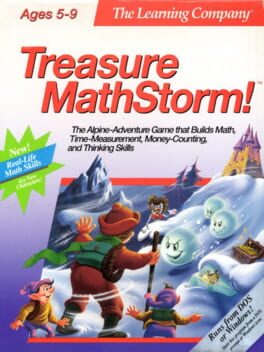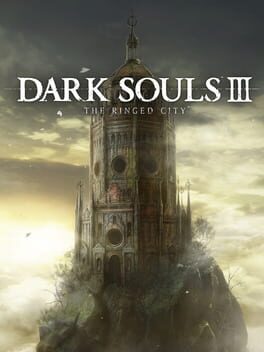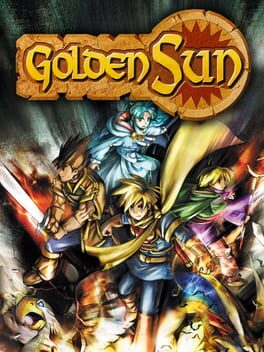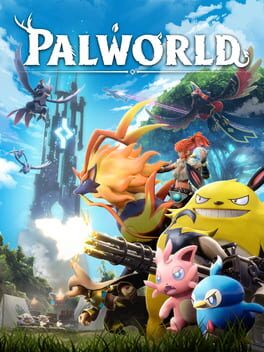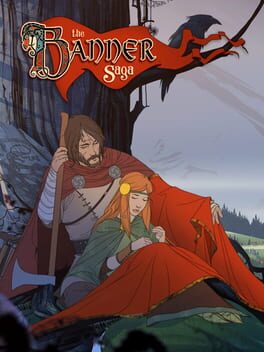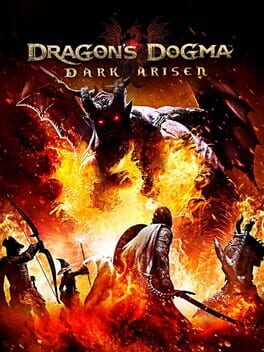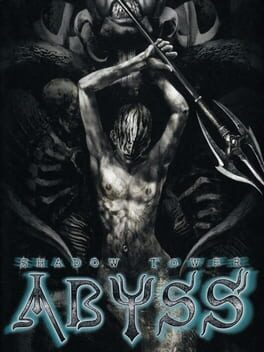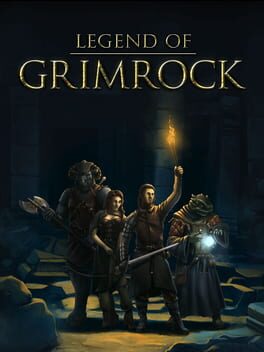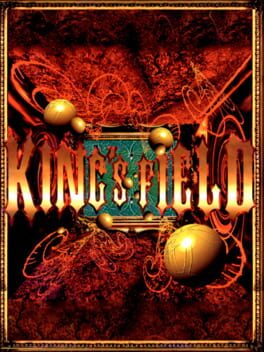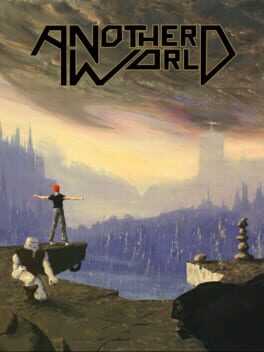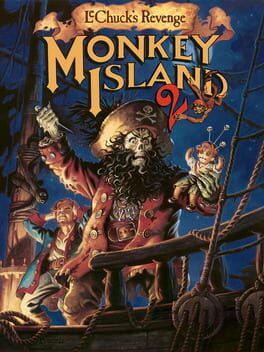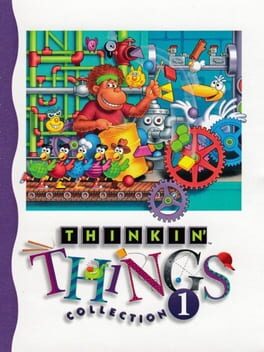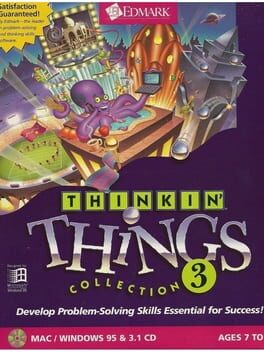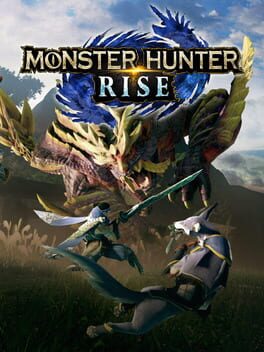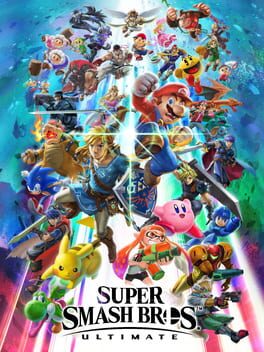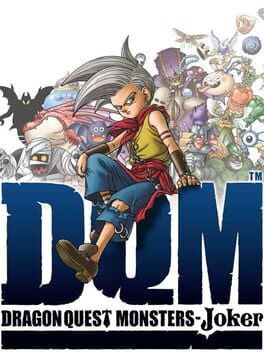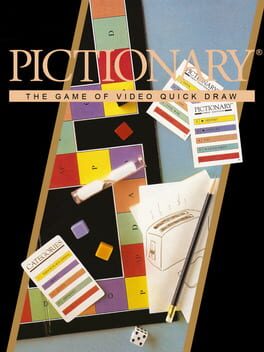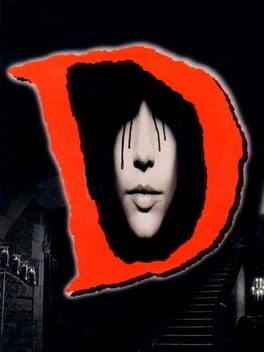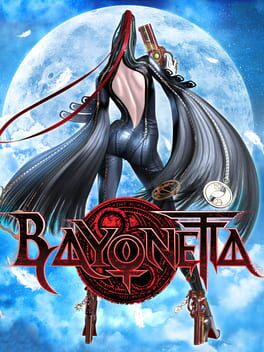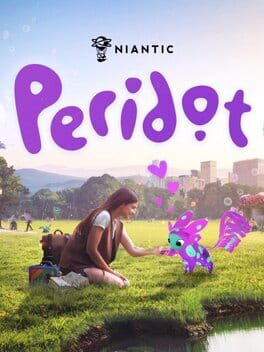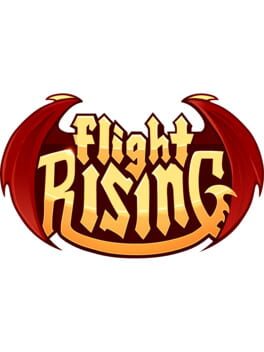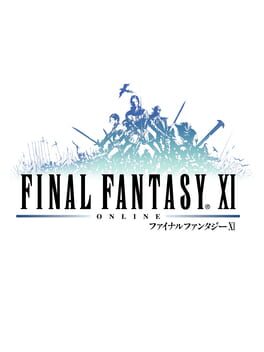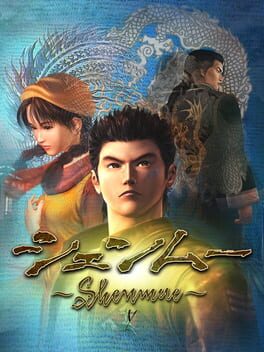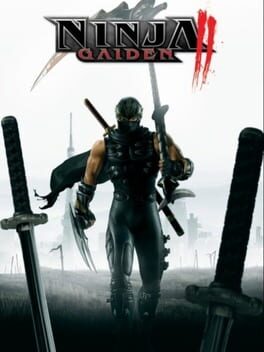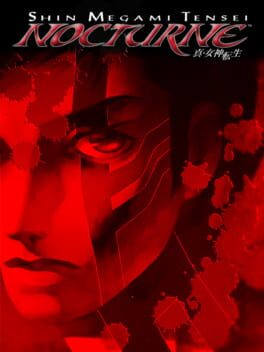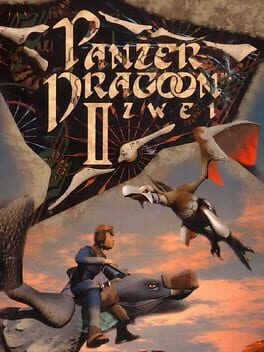Spacelung
39 reviews liked by Spacelung
Treasure MathStorm!
1992
I have really fond memories of playing Treasure MathStorm in my middle school computer lab. My class went nuts for this game, we would beg to play it constantly. Out of the many childhood edutainment games I played back then, memories of this one have stuck with me the most. I was curious about whether or not this game holds up, so I decided to emulate and it and give it a go.
I was honestly pleasantly surprised. Of course this is a very old game for children so I have to judge it based on that criteria, but I found it compelling nonetheless. The story is kind of nonsense but the art is charming and the music has solid hooks - it's not repetitive (for how long you spend hearing each song) or irritating like the music in a lot of these games can be. Each level of the mountain has its own sound and distinct appearance. Even the main NPCs on each level have subtle personality quirks suggested in their animations that are fitting for them; the Time elf on the first level will tap his watch if you take too long to determine the answer and tap his foot in time to your button inputs, for example. The prizes you get for completing each climb are also animated if you press their corresponding number while in the prize cave. These little details weren't necessary for an educational game to do its job but they do a lot of heavy lifting to make Treasure Mountain a place I wanted to be. I don't recall noticing all of these details when I was a kid but I definitely appreciated them now.
I streamed about 2 hours of this for some friends who are also nostalgic about 90s edutainment games and I figured I'd stop afterwards. But as I was ranking up and getting the prizes, I realized that I had never actually made much progress in this game when I was a kid. I was curious about what would happen at the end. So over the course of 2 weeks I chipped away at it. If there's anything bad to say about this game, it's that playing it with the goal of winning sure is a grind. Comparatively, mind you. I've spent longer in other games' repetitive tedium by far but the nature of the doing the same loop over and over with the moderate effort required to do middle school level math (if you were never a math wiz like me) certainly gets to a person. But this game was not made for me, an adult. Children tend to do much better with a structure like this because they have much more time on their hands and fewer expectations of how to best spend it.
I won't make judgement calls here on how good of a use of my time an entire play-through of Treasure MathStorm was for me or anyone my age. It's not the point. But I will say that I actually enjoyed myself. I didn't expect anything big from the ending and it was just satisfying enough. I got to see the end with my own effort and that's all I really wanted from the experience. It was cool to revisit a strong piece of nostalgia from my childhood.
I was honestly pleasantly surprised. Of course this is a very old game for children so I have to judge it based on that criteria, but I found it compelling nonetheless. The story is kind of nonsense but the art is charming and the music has solid hooks - it's not repetitive (for how long you spend hearing each song) or irritating like the music in a lot of these games can be. Each level of the mountain has its own sound and distinct appearance. Even the main NPCs on each level have subtle personality quirks suggested in their animations that are fitting for them; the Time elf on the first level will tap his watch if you take too long to determine the answer and tap his foot in time to your button inputs, for example. The prizes you get for completing each climb are also animated if you press their corresponding number while in the prize cave. These little details weren't necessary for an educational game to do its job but they do a lot of heavy lifting to make Treasure Mountain a place I wanted to be. I don't recall noticing all of these details when I was a kid but I definitely appreciated them now.
I streamed about 2 hours of this for some friends who are also nostalgic about 90s edutainment games and I figured I'd stop afterwards. But as I was ranking up and getting the prizes, I realized that I had never actually made much progress in this game when I was a kid. I was curious about what would happen at the end. So over the course of 2 weeks I chipped away at it. If there's anything bad to say about this game, it's that playing it with the goal of winning sure is a grind. Comparatively, mind you. I've spent longer in other games' repetitive tedium by far but the nature of the doing the same loop over and over with the moderate effort required to do middle school level math (if you were never a math wiz like me) certainly gets to a person. But this game was not made for me, an adult. Children tend to do much better with a structure like this because they have much more time on their hands and fewer expectations of how to best spend it.
I won't make judgement calls here on how good of a use of my time an entire play-through of Treasure MathStorm was for me or anyone my age. It's not the point. But I will say that I actually enjoyed myself. I didn't expect anything big from the ending and it was just satisfying enough. I got to see the end with my own effort and that's all I really wanted from the experience. It was cool to revisit a strong piece of nostalgia from my childhood.
Mars After Midnight
2024
a sublime experience from the great lucas pope. distills the gameplay essence of papers please into a simple, comedic form and it works wonderfully. specifically, the idea of hosting a community event and making sure that the right people attend to get the help they need. once i got into the rhythm of it i found myself giddy to open up the door's hatch and take a look at who was trying to get in. there's a ton of fun events and gimmicks involved and i enjoyed the planning, but i do think there's a tad bit too many events in the mars colony section. the subtle character touches for our 3 eyed martian and his robot companion leaves me wanting more from them. i adored when the robot began dreaming about his teddy bear.
at the end, there's a slight but eloquent touch, to remind people to do this sort of "care" in real life, and i appreciated it.
not going to be a playdate seller by any means, but if you have a playdate, this is an easy recommendation.
at the end, there's a slight but eloquent touch, to remind people to do this sort of "care" in real life, and i appreciated it.
not going to be a playdate seller by any means, but if you have a playdate, this is an easy recommendation.
And now the inverse of Ashes. This is probably the best thing to come out of this franchise! As good as Miyizaki and Co have been at ending their games in the past, they never managed to match satisfying narrative closure with genuinely compelling and cinematic gameplay, until this of course.
Very consciously the grand finale of the entire Dark Souls series, but it works through sheer overwhelming force. I like its conclusion at the end of time immensely, how it ties into the circularity of the series' prior narratives and how it nicely deflates the slightly overcooked fanservice of the base game (benefiting both this and DS3 on the whole, for my money). But what I really like, and what everyone likes, is that these are the best areas and bosses they ever made.
Touching down into The Ringed City is a visual moment so jaw-dropping that it reverberates back through the entire series. Clearly, From must have felt this too, Elden Ring constantly strains for moments of visual splendour, and there are so many incredible ones, but none are this exuberant.
These gorgeous sights are matched with delightful challenges and my favourite recurring NPC in any of these games (weirdo bug man that jumpscares you with poetry recitals). And then there are the boss fights.
I think these bosses broke From's collective brain. They're desperately chasing the high these fights provided, to no avail. Sekiro one-upped this by inventing a new combat system whole-cloth but returning to the Dark Souls style, they've no idea what to do. How can you make a gank fight more exciting than Demon Prince? How can you do a traditional dragon fight better than Midir? How can you conceivably make a Souls boss that surpasses Slave Knight Gael? Answer: you can't!
Gael is a peak of the art form for me, a ferocious ballet that pulls no punches but takes no shortcuts, inviting you to either keep up or die. This is the ideal of this style of boss fight, and it justifies itself completely as the culmination of an entire cultural phenomenon.
Is it the hardest boss they'd ever make? No. Will they ever be able to surpass its perfect blend of difficulty, spectacle and escalation within the context of the Dark Souls formula? I'd love to see it. But if Melania is the kind of thing they're reaching for as the next step, it's never going to happen.
Minus half a star for the dip-shit 4th boss of the DLC. Probably forgot he was there didn't you? But I remember. A single, baffling, blotch on an otherwise perfect canvas.
Very consciously the grand finale of the entire Dark Souls series, but it works through sheer overwhelming force. I like its conclusion at the end of time immensely, how it ties into the circularity of the series' prior narratives and how it nicely deflates the slightly overcooked fanservice of the base game (benefiting both this and DS3 on the whole, for my money). But what I really like, and what everyone likes, is that these are the best areas and bosses they ever made.
Touching down into The Ringed City is a visual moment so jaw-dropping that it reverberates back through the entire series. Clearly, From must have felt this too, Elden Ring constantly strains for moments of visual splendour, and there are so many incredible ones, but none are this exuberant.
These gorgeous sights are matched with delightful challenges and my favourite recurring NPC in any of these games (weirdo bug man that jumpscares you with poetry recitals). And then there are the boss fights.
I think these bosses broke From's collective brain. They're desperately chasing the high these fights provided, to no avail. Sekiro one-upped this by inventing a new combat system whole-cloth but returning to the Dark Souls style, they've no idea what to do. How can you make a gank fight more exciting than Demon Prince? How can you do a traditional dragon fight better than Midir? How can you conceivably make a Souls boss that surpasses Slave Knight Gael? Answer: you can't!
Gael is a peak of the art form for me, a ferocious ballet that pulls no punches but takes no shortcuts, inviting you to either keep up or die. This is the ideal of this style of boss fight, and it justifies itself completely as the culmination of an entire cultural phenomenon.
Is it the hardest boss they'd ever make? No. Will they ever be able to surpass its perfect blend of difficulty, spectacle and escalation within the context of the Dark Souls formula? I'd love to see it. But if Melania is the kind of thing they're reaching for as the next step, it's never going to happen.
Minus half a star for the dip-shit 4th boss of the DLC. Probably forgot he was there didn't you? But I remember. A single, baffling, blotch on an otherwise perfect canvas.
Dark Souls III
2016
It's hysterical that this game has been canonized as a return to form / 'true sequel' to the original Dark Souls since it's so clearly Dark Souls 2 and Bloodborne stacked on top of each other in a DS1-shaped trench coat. Even more hysterical, it works!
After playing so many of From's Soulslikes (we need a new word for these) in such short proximity, I've devised an internal list of 'things I care about when it comes to these games.' In ascending order of importance; Story, Visuals, Level Design, Combat System and Boss Fights. Keen-eyed readers will notice these are extremely vague categories containing millions of sub-elements, unignorable amounts of overlap and important factors unaccounted for, contributing to a poor summary overall. So what? What are you a cop?
DS3's story is intensely weird and can be read from so many directions for what is, on its surface, the least obfuscated Miyazaki had written to this point. DS2's narrative was a direct commentary on the inevitable failure to live up to its predecessor, presenting a marred hollow imitation of the first game's world. 3 is seemingly a commentary on the decision to give the fans exactly what they want. It's the exact narrative of the first two games again, just making the implicit themes of 2 direct. Everything has happened before, not now in a spiritual sense, but in a literal one. The re-interpretation of various areas is the most prevalent example, and the re-emergence of that one (you know the one) leitmotif in the final boss is the most obvious. It's tempting to dismiss this as cravenly self-referential, and maybe it is, but it's oddly compelling nonetheless. I kind of like that this is an expository midquel, showing a world evolved from DS1's but just recognisable enough that we can tell it must take place somewhere before 2's far-flung imitation. It deepens the fanservice-y 'OMG it's literally Anor Londo' moments to know they don't matter. The cycle will continue, and this iconography will be gone far before it ends (I think Ringed City hammers this home but I'll get to that another day). I don't know, that's just how I took it, the narratives have never been the draw to these games for me. I just like that Miyazaki decided that his grand self-commentary on the one story he tells over and over again would also be a more accessible version of that story.
FromSoftware makes gorgeous video games, and I'd be hard-pressed to call this an exception. Some areas here are high watermarks for the whole of 2010s gaming. I'd probably first point to Irithyll of the Boreal Valley or Archdragon Peak as the most stunning examples of such (and the DLC hits even higher highs). I've only two real problems, both showing the difficulty of discussing this game in 2024. One is the colour grading. I don't know whose idea it was to slap the Bloodborne colour correction filter onto this thing, but they should be sacked. The washed-out grey aesthetic here is a major bummer for far too many areas of this game, and it renders certain sections visual mush. Compare Farron Keep to ER's Caelid, it's not even close. If you're going to drop me in a poison swamp for an hour (by all means do, I seem to enjoy it), I'd prefer it didn't look like a Russo Brothers film. I can see arguments for the value of the oppressive atmosphere it provides (and I agree with them regarding Bloodborne) but here the trade-off is not worth it. This contributes heavily to Issue Two: every game they've made since looks even better. Sekiro and Elden Ring embrace much brighter colour palettes that make everything pop so much more, and Armored Core 6 wipes its robot ass with everything else the studio has ever made. I'm a sucker for picturesque sights, and this game has a damn nice few, but not one moment of it made my jaw drop the way it did the first time I dropped into Limgrave or Fountainhead Palace in Sekiro. In short, my only struggle with this game's aesthetic is that I know they can do much better (or at the very least they've trended in a direction I far prefer). Take a shot every time I unfavourably compare this game to a game that wasn't out when it was released. You'll die! I just cannot help but feel they've improved in certain areas since. Tis my cross to bear.
I think the number one problem with this game for most DS1 die-hards is, for all its posturing to fans of the first game, the much-loved interconnectivity from said game is non-existent. I get it, I do, it's one of my favourite things about that game as well. But for what we have here, a more segmented series of 'levels' with a lot of linear offshoots to explore that wrap around within themselves, I like it a lot. In a way, it's that interconnectivity done on a much smaller scale. Sure, it's only slightly more involved than the linearity of 2, but I liked 2's levels as well! I'm not going to get on my linear-level high horse yet again, much as I love to, but I'm always ready to bat for well-constructed straightforwardness and that's what I see here. I will concede it does occasionally feel like the levels are just trying to lose you in their many dead ends. For example, I'd love to see someone unfamiliar with these games try to navigate the High Wall of Lothric. The amount of little offshoots would have freaked me out if this were my first one. But at the end of the day, I thoroughly enjoy traversing these levels, and I like that I'm already seeing sparks of what would become the level design philosophy of Sekiro. Few games are as fun to move through as that one, and there are high points here not far behind, even if they are slightly over-reliant on the fast travel system to work. A joy in this capacity, if not as mind-blowing as other instalments.
The combat system is probably the most difficult part to judge fairly in 2024. At release, this was the best any FromSoft game controlled. They reverted most of what I didn't like about the BloodBorne system (the vials, the dash instead of the roll, rally [I know I'm just not a fan, love you BB-heads]) while retaining the faster pace and smoother movement. Sure, maybe the game doesn't work hard enough to stop you from just R1-ing everything to oblivion but hey, that's what I was doing anyway! On the whole, unilaterally a good thing. The only problem is, they've gotten even better since (take a shot)! Putting aside AC6 (just not a reasonable comparison) and Sekiro (not a Soulslike but far more gratifying for me), Elden Ring, for all its flaws, basically nabs this game's combat and one-ups it on every front. In the ways 3's is tighter, smoother and faster than 2, ER's is to 3, while more closely resembling it. So, a great feeling system, but one we now have a direct improvement on. This puts DS3 in a weird place. The other games, in their slow and janky glory, are very distinct in combat, ultimately making 3's feel less special. Perhaps I'd leverage this complaint at ER too, for not doing enough to make its combat distinct and ultimately making its predecessor feel a little redundant. This is probably just a me thing. Despite all the needless philosophising, DS3's combat feels great. But if you've played Elden Ring you might have a nagging feeling it's a straight downgrade.
Which is more than made up for in the boss fights! I've learnt to love the jagged difficulty spikes of this series, but a part of me has wanted to see how one of these would play with a more natural difficulty curve. I now have my answer, incredibly well! It makes Elden Ring's unreasonable peaks all the more infuriating. 3 is an act of constant rising tension, each boss requiring slightly more work, memorisation and execution to get past. Early-game bosses are delightful and unique encounters, late-game bosses like Twin Princes or Nameless King are electrifying (har har) spectacles that will stretch the abilities you have had time to develop throughout the game. Better yet, not one arbitrary instakill grab in sight! I get the sense the back end of this game (and the final DLC) informed a lot of Elden Ring's boss design, but they got the wrong idea. The fun of Nameless King isn't just his cool delays and roll catches that test your execution, the fun of it is him doing that after a game's worth of slow burn difficulty increases readying you for it. Nameless King is tough, he does fuck with your muscle memory, but he is a culmination of an entire game's worth of tough, and you'll be ready for him by the time you find him. That's the best kind of difficulty to me, and as much fun as I had facing something like Margit, his moveset isn't as gratifying an act of subversion if the game hasn't had a chance to build something to subvert yet. Enough rambling, the base game of DS3 has an exceptional sense of rising action in its boss design, climaxing expertly with Nameless King, and borrowing the classic Dark Souls trick of poetically underwhelming you with the final boss. Too easy, but in a way that feels right. These guys know how to end a game.
On a final note, it's awesome that a game so deeply weird, completely singular and narratively unapproachable to newcomers (at least on any below-the-surface level) can read as something of a crowd-pleasing swing at fan service. The bar really is that high. Suffering from success and all that.
After playing so many of From's Soulslikes (we need a new word for these) in such short proximity, I've devised an internal list of 'things I care about when it comes to these games.' In ascending order of importance; Story, Visuals, Level Design, Combat System and Boss Fights. Keen-eyed readers will notice these are extremely vague categories containing millions of sub-elements, unignorable amounts of overlap and important factors unaccounted for, contributing to a poor summary overall. So what? What are you a cop?
DS3's story is intensely weird and can be read from so many directions for what is, on its surface, the least obfuscated Miyazaki had written to this point. DS2's narrative was a direct commentary on the inevitable failure to live up to its predecessor, presenting a marred hollow imitation of the first game's world. 3 is seemingly a commentary on the decision to give the fans exactly what they want. It's the exact narrative of the first two games again, just making the implicit themes of 2 direct. Everything has happened before, not now in a spiritual sense, but in a literal one. The re-interpretation of various areas is the most prevalent example, and the re-emergence of that one (you know the one) leitmotif in the final boss is the most obvious. It's tempting to dismiss this as cravenly self-referential, and maybe it is, but it's oddly compelling nonetheless. I kind of like that this is an expository midquel, showing a world evolved from DS1's but just recognisable enough that we can tell it must take place somewhere before 2's far-flung imitation. It deepens the fanservice-y 'OMG it's literally Anor Londo' moments to know they don't matter. The cycle will continue, and this iconography will be gone far before it ends (I think Ringed City hammers this home but I'll get to that another day). I don't know, that's just how I took it, the narratives have never been the draw to these games for me. I just like that Miyazaki decided that his grand self-commentary on the one story he tells over and over again would also be a more accessible version of that story.
FromSoftware makes gorgeous video games, and I'd be hard-pressed to call this an exception. Some areas here are high watermarks for the whole of 2010s gaming. I'd probably first point to Irithyll of the Boreal Valley or Archdragon Peak as the most stunning examples of such (and the DLC hits even higher highs). I've only two real problems, both showing the difficulty of discussing this game in 2024. One is the colour grading. I don't know whose idea it was to slap the Bloodborne colour correction filter onto this thing, but they should be sacked. The washed-out grey aesthetic here is a major bummer for far too many areas of this game, and it renders certain sections visual mush. Compare Farron Keep to ER's Caelid, it's not even close. If you're going to drop me in a poison swamp for an hour (by all means do, I seem to enjoy it), I'd prefer it didn't look like a Russo Brothers film. I can see arguments for the value of the oppressive atmosphere it provides (and I agree with them regarding Bloodborne) but here the trade-off is not worth it. This contributes heavily to Issue Two: every game they've made since looks even better. Sekiro and Elden Ring embrace much brighter colour palettes that make everything pop so much more, and Armored Core 6 wipes its robot ass with everything else the studio has ever made. I'm a sucker for picturesque sights, and this game has a damn nice few, but not one moment of it made my jaw drop the way it did the first time I dropped into Limgrave or Fountainhead Palace in Sekiro. In short, my only struggle with this game's aesthetic is that I know they can do much better (or at the very least they've trended in a direction I far prefer). Take a shot every time I unfavourably compare this game to a game that wasn't out when it was released. You'll die! I just cannot help but feel they've improved in certain areas since. Tis my cross to bear.
I think the number one problem with this game for most DS1 die-hards is, for all its posturing to fans of the first game, the much-loved interconnectivity from said game is non-existent. I get it, I do, it's one of my favourite things about that game as well. But for what we have here, a more segmented series of 'levels' with a lot of linear offshoots to explore that wrap around within themselves, I like it a lot. In a way, it's that interconnectivity done on a much smaller scale. Sure, it's only slightly more involved than the linearity of 2, but I liked 2's levels as well! I'm not going to get on my linear-level high horse yet again, much as I love to, but I'm always ready to bat for well-constructed straightforwardness and that's what I see here. I will concede it does occasionally feel like the levels are just trying to lose you in their many dead ends. For example, I'd love to see someone unfamiliar with these games try to navigate the High Wall of Lothric. The amount of little offshoots would have freaked me out if this were my first one. But at the end of the day, I thoroughly enjoy traversing these levels, and I like that I'm already seeing sparks of what would become the level design philosophy of Sekiro. Few games are as fun to move through as that one, and there are high points here not far behind, even if they are slightly over-reliant on the fast travel system to work. A joy in this capacity, if not as mind-blowing as other instalments.
The combat system is probably the most difficult part to judge fairly in 2024. At release, this was the best any FromSoft game controlled. They reverted most of what I didn't like about the BloodBorne system (the vials, the dash instead of the roll, rally [I know I'm just not a fan, love you BB-heads]) while retaining the faster pace and smoother movement. Sure, maybe the game doesn't work hard enough to stop you from just R1-ing everything to oblivion but hey, that's what I was doing anyway! On the whole, unilaterally a good thing. The only problem is, they've gotten even better since (take a shot)! Putting aside AC6 (just not a reasonable comparison) and Sekiro (not a Soulslike but far more gratifying for me), Elden Ring, for all its flaws, basically nabs this game's combat and one-ups it on every front. In the ways 3's is tighter, smoother and faster than 2, ER's is to 3, while more closely resembling it. So, a great feeling system, but one we now have a direct improvement on. This puts DS3 in a weird place. The other games, in their slow and janky glory, are very distinct in combat, ultimately making 3's feel less special. Perhaps I'd leverage this complaint at ER too, for not doing enough to make its combat distinct and ultimately making its predecessor feel a little redundant. This is probably just a me thing. Despite all the needless philosophising, DS3's combat feels great. But if you've played Elden Ring you might have a nagging feeling it's a straight downgrade.
Which is more than made up for in the boss fights! I've learnt to love the jagged difficulty spikes of this series, but a part of me has wanted to see how one of these would play with a more natural difficulty curve. I now have my answer, incredibly well! It makes Elden Ring's unreasonable peaks all the more infuriating. 3 is an act of constant rising tension, each boss requiring slightly more work, memorisation and execution to get past. Early-game bosses are delightful and unique encounters, late-game bosses like Twin Princes or Nameless King are electrifying (har har) spectacles that will stretch the abilities you have had time to develop throughout the game. Better yet, not one arbitrary instakill grab in sight! I get the sense the back end of this game (and the final DLC) informed a lot of Elden Ring's boss design, but they got the wrong idea. The fun of Nameless King isn't just his cool delays and roll catches that test your execution, the fun of it is him doing that after a game's worth of slow burn difficulty increases readying you for it. Nameless King is tough, he does fuck with your muscle memory, but he is a culmination of an entire game's worth of tough, and you'll be ready for him by the time you find him. That's the best kind of difficulty to me, and as much fun as I had facing something like Margit, his moveset isn't as gratifying an act of subversion if the game hasn't had a chance to build something to subvert yet. Enough rambling, the base game of DS3 has an exceptional sense of rising action in its boss design, climaxing expertly with Nameless King, and borrowing the classic Dark Souls trick of poetically underwhelming you with the final boss. Too easy, but in a way that feels right. These guys know how to end a game.
On a final note, it's awesome that a game so deeply weird, completely singular and narratively unapproachable to newcomers (at least on any below-the-surface level) can read as something of a crowd-pleasing swing at fan service. The bar really is that high. Suffering from success and all that.
Golden Sun
2001
Haven't been playing games lately (reading books.. and to some extent still recovering from the sprint of IGF judging) but I didn't have anything written down for Golden Sun. I was looking over the guidebook to Golden Sun at my parents' place last year and I was reminded of what an approachable JRPG series this was for kids! But that aside, what I want to draw attention to is more how much I like (and still like) the field psynergy mechanics. The puzzles are only lightly challenging, but they lend a richness to the world: dungeons aren't just defined by treasure boxes and monsters, but they're physical places with rules and ways to manipulate the environment. Sure, the ways this is expressed is through simple puzzles, but it's still a neat idea that I thought was tied together really well and exciting to discover. The small plant? You can grow it! A secret passage might be there if you cast reveal! Move things around to hop over passages. I would love to see more of this kind of inventiveness on the field in narrative-focused RPGs.
Palworld
2024
Are we so gullible? Do we as an audience not demand anything from our art? There's no story, no new mechanics, no real characters, no interesting or enjoyable visuals, no compelling gameplay, no original ideas at all in fact. Is a faceless strawman to antagonise really enough to get millions of people to play an Unreal Engine asset flip made as artlessly as possible? Is no one else actively disturbed by how blatantly and gracelessly this rips mechanics from every popular game of the last 2 decades, without integrating any of them together whatsoever? Has art ever felt this cynical before?
Feel free to discount my opinion. I am a 'salty Pokemon fanboy' after all, and I only gave this game an hour or so of my not particularly highly valued time. I personally just prefer the art I engage with to care for the art form it sits within, even a little bit. Palworld hates video games. It sees nothing more within them than a collection of things to do and hopes that by shovelling a flaccid farcical version of as many of them as possible into your mouth it will somehow constitute a 'video game' when all is said and done. It doesn't. I'm deeply saddened that so many gamers think so lowly of our art form that they genuinely think this is acceptable.
Feel free to discount my opinion. I am a 'salty Pokemon fanboy' after all, and I only gave this game an hour or so of my not particularly highly valued time. I personally just prefer the art I engage with to care for the art form it sits within, even a little bit. Palworld hates video games. It sees nothing more within them than a collection of things to do and hopes that by shovelling a flaccid farcical version of as many of them as possible into your mouth it will somehow constitute a 'video game' when all is said and done. It doesn't. I'm deeply saddened that so many gamers think so lowly of our art form that they genuinely think this is acceptable.
Palworld
2024
Thinking about this game, the discourse around it, the developers, the streamers, the players, the supporters, gives me spiritual depression
The Banner Saga
2014
the banner saga is the fantasy epic of our times. visiting it again, my appreciation for everything it achieves grows deeper. games as economy require clever solutions for costly goals, and the format of traveling via a caravan allow the fantasy of a world fully immersed and realized for the player. indeed, the game evokes a long history buried in the deep snow of the north, one of a fragile peace subsiding once again to old war and devastation, and seemingly even further: total annihilation. we see only the edges of this in this game, and the ending haunts of what is to come.
on this playthrough i played the campaign on hard difficulty, and the emphasis on attrition of resources became even greater. the tactical combat layer to the game i think is misunderstood and i think even underrated, but it is understandable. in traditional turn-based tactics game, the meta is undoubtedly to focus a single target, whittling them down one-by-one. the banner saga's combination of health and attack power into one stat dramatically changes this. indeed, there is little point to killing an enemy who has one strength left, or more importantly: an enemy who has less strength than any of your roster. if you waste your resources on inefficient targets, you can easily find yourself at the end being picked off by those you left alone.
the game is richest when you're in this cycle of carefully utilizing your resources. renown can be used to buy supplies which keep the caravan strong and thriving, but also to buy trinkets or direct upgrades for your troops. there are many optional battles too that may reward renown and supplies, but fights can be costly and you can rack up injuries on your troops which dramatically undermine their combat ability. in many tactics games you often maintain a single roster, but on hard difficulty it askes you to be effective with many. most games struggle to have meaningful difficulty, i feel, but banner saga realizes its metaplay quite well and it feels fair all around.
i move now to continue the series with the banner saga 2.
on this playthrough i played the campaign on hard difficulty, and the emphasis on attrition of resources became even greater. the tactical combat layer to the game i think is misunderstood and i think even underrated, but it is understandable. in traditional turn-based tactics game, the meta is undoubtedly to focus a single target, whittling them down one-by-one. the banner saga's combination of health and attack power into one stat dramatically changes this. indeed, there is little point to killing an enemy who has one strength left, or more importantly: an enemy who has less strength than any of your roster. if you waste your resources on inefficient targets, you can easily find yourself at the end being picked off by those you left alone.
the game is richest when you're in this cycle of carefully utilizing your resources. renown can be used to buy supplies which keep the caravan strong and thriving, but also to buy trinkets or direct upgrades for your troops. there are many optional battles too that may reward renown and supplies, but fights can be costly and you can rack up injuries on your troops which dramatically undermine their combat ability. in many tactics games you often maintain a single roster, but on hard difficulty it askes you to be effective with many. most games struggle to have meaningful difficulty, i feel, but banner saga realizes its metaplay quite well and it feels fair all around.
i move now to continue the series with the banner saga 2.
Armored Core VI is everything a mech game should be. It has meaningful robot customization, challenging combat, a clean UI, and (most importantly) a great story with deeply interesting characters. This review is very short but it's not for lack of topics to talk about. I wanted to keep this spoiler-free and the story in Fires of Rubicon left a lasting impact on me that I highly recommend others experience first hand. I'm eager to jump back in and play again for other endings in the future as well.
The mission-based structure is such a breath of fresh air as games in general (including FromSoft’s last release, Elden Ring) feel like they’re only getting bigger and longer. They don’t need to be that way to give the player a substantial experience and Armored Core VI is proof. As a big fan of the studio’s other work, I think that this is their most challenging game combat-wise but its placement of checkpoints within missions made retrying fights again and again much less of a pain than it has been in the past.
Additional bonus: I’ve never played an Armored Core game before this and I never once felt like anything was missing when I was playing VI.
The mission-based structure is such a breath of fresh air as games in general (including FromSoft’s last release, Elden Ring) feel like they’re only getting bigger and longer. They don’t need to be that way to give the player a substantial experience and Armored Core VI is proof. As a big fan of the studio’s other work, I think that this is their most challenging game combat-wise but its placement of checkpoints within missions made retrying fights again and again much less of a pain than it has been in the past.
Additional bonus: I’ve never played an Armored Core game before this and I never once felt like anything was missing when I was playing VI.
This review contains spoilers
Every moment spent playing Dragon’s Dogma was suffering. Every moment away from Dragon’s Dogma, I could think of nothing else.
Despite constant frustrations with the inventory and quest management, I loved this game. I don’t think the story itself was bad, but the way it was told (or neglected) was ineffective at best. The tone and the music were perfect for this world though and the time I spent exploring on my own always felt good provided I remembered to save the game before I inevitably died to something cool and got sent back to my last save. Fighting big monsters I found along the path to a destination was exciting once my gear was upgraded a bit. The Pawns were the best part though. They are excessively silly with their repetitive dialogue and bizarre behavior. I was so endeared to them. Even when I was having a rough time in this game, the Pawns kept me coming back.
Unfortunately the ending left a bad taste in my mouth. I’m all for subtle lore but I think pacing is doubly important if a story is going to pull that off. In Dragon’s Dogma, the dragon appears at the very start of the game and we don’t hear anything about it again outside of people being scared of it until the end. Maybe there’s quests about it I didn’t find, that’s possible. But the meat and potatoes of the game is all mostly unrelated to what this story is supposed to be about. For such an ambitious narrative, I needed more direct attention being paid to it for an ending like this to land. Plus the romance mechanics were barely able to be controlled and my “beloved” was one I actively disliked. It was awful seeing them in the cutscenes.
So nothing about the ending worked for me and I wish I could have just continued running around with my silly Pawns and getting thrown off cliffs by Cyclops. That part was great. Whenever I get around to doing Bitterblack Isle, I think I will enjoy that a lot.
Despite constant frustrations with the inventory and quest management, I loved this game. I don’t think the story itself was bad, but the way it was told (or neglected) was ineffective at best. The tone and the music were perfect for this world though and the time I spent exploring on my own always felt good provided I remembered to save the game before I inevitably died to something cool and got sent back to my last save. Fighting big monsters I found along the path to a destination was exciting once my gear was upgraded a bit. The Pawns were the best part though. They are excessively silly with their repetitive dialogue and bizarre behavior. I was so endeared to them. Even when I was having a rough time in this game, the Pawns kept me coming back.
Unfortunately the ending left a bad taste in my mouth. I’m all for subtle lore but I think pacing is doubly important if a story is going to pull that off. In Dragon’s Dogma, the dragon appears at the very start of the game and we don’t hear anything about it again outside of people being scared of it until the end. Maybe there’s quests about it I didn’t find, that’s possible. But the meat and potatoes of the game is all mostly unrelated to what this story is supposed to be about. For such an ambitious narrative, I needed more direct attention being paid to it for an ending like this to land. Plus the romance mechanics were barely able to be controlled and my “beloved” was one I actively disliked. It was awful seeing them in the cutscenes.
So nothing about the ending worked for me and I wish I could have just continued running around with my silly Pawns and getting thrown off cliffs by Cyclops. That part was great. Whenever I get around to doing Bitterblack Isle, I think I will enjoy that a lot.
7 lists liked by Spacelung
by Snigglegros |
74 Games
by wilx |
50 Games
by Coelacanis |
15 Games
by Coelacanis |
5 Games
by Coelacanis |
59 Games
by Coelacanis |
8 Games
by OhPoorPup |
30 Games
